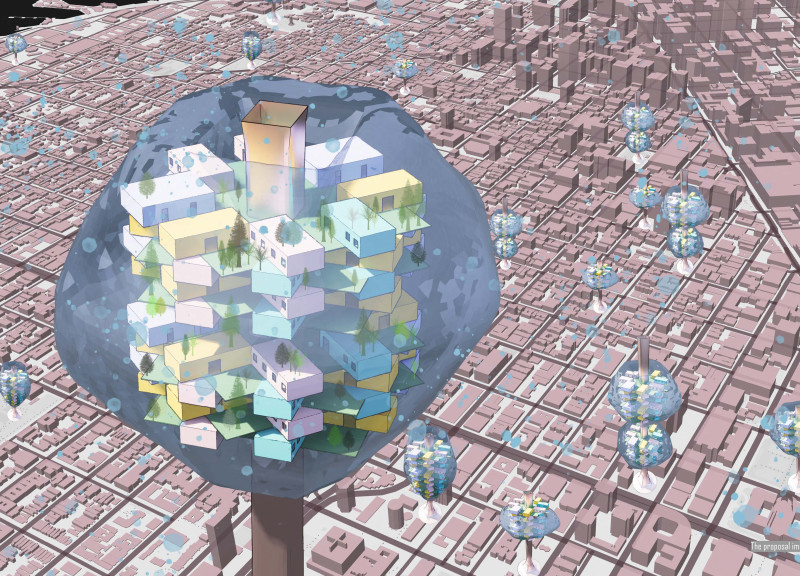5 key facts about this project
Staying Afloat addresses the housing problems in San Francisco, a city known for its high rents and limited space. The design proposes a new way of living by utilizing airspace above existing buildings. This approach aims to create affordable housing while allowing residents to thrive in an urban setting. The focus is on building a community that is sustainable, adaptable, and supportive of diverse lifestyles.
Structure and Modularity
The design features a modular system organized in a 9 ft by 9 ft grid. This layout offers flexibility, allowing for different residential configurations to meet the needs of various occupants. By maximizing the vertical space, it transforms unused air rights into functional living areas. The result is a reduced footprint on the ground, making better use of a crowded city.
Community Integration
A key aspect of the design includes communal spaces, such as shared kitchens and dining areas. These spaces encourage interactions between residents, helping to build a sense of community. In a city where many live alone, these shared environments can make a significant difference in fostering connections and enhancing everyday life.
Ventilation and Energy Efficiency
Natural airflow is an important consideration in the design. The arrangement of stacked and rotated units is intended to enhance ventilation throughout the building. This configuration allows warm air to escape through the atrium, especially during warmer months. By using this natural process, the design aims to maintain comfort while reducing the need for mechanical cooling systems.
Materials and Environmental Considerations
The project utilizes ETFE panels, which are lightweight and contribute to the building's energy efficiency. These panels act as a protective layer against weather and control thermal levels inside the space. The choice of materials reflects a commitment to sustainability and modern design, creating a structure that is both functional and appealing.
Sky gardens are included throughout the design, providing green spaces that serve multiple purposes. They help manage wind loads while offering recreational areas for residents. This integration of nature further enhances the living experience, making the environment more inviting and connected to the urban landscape.






















































